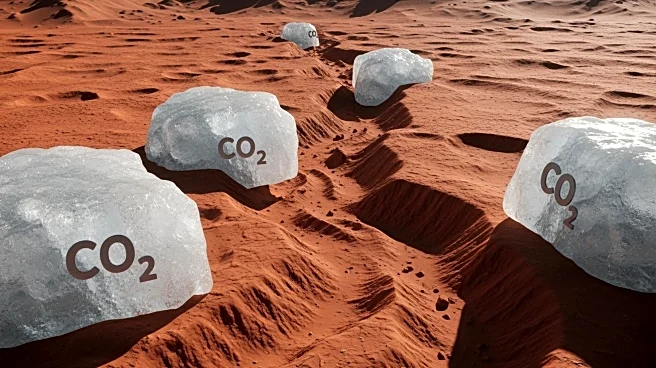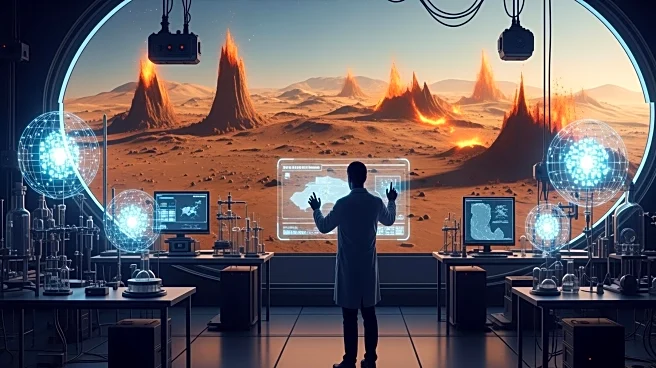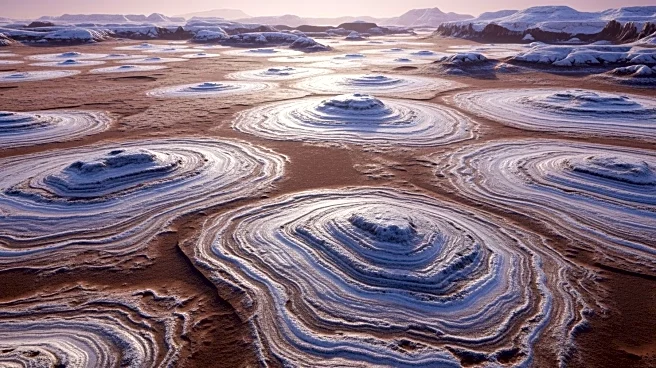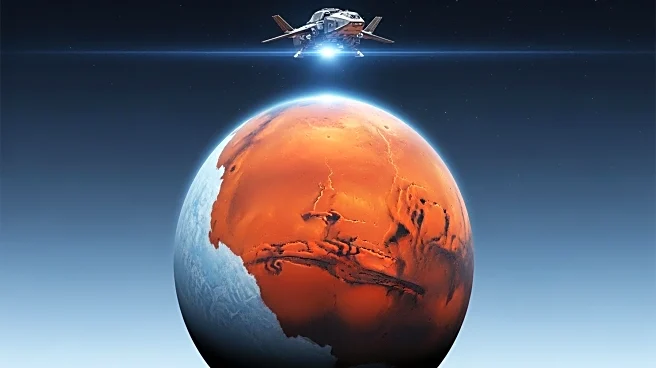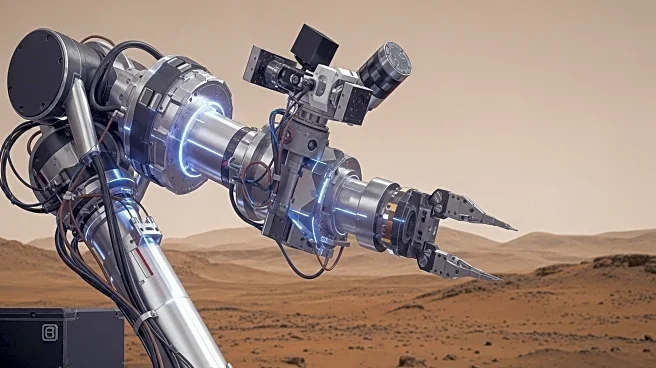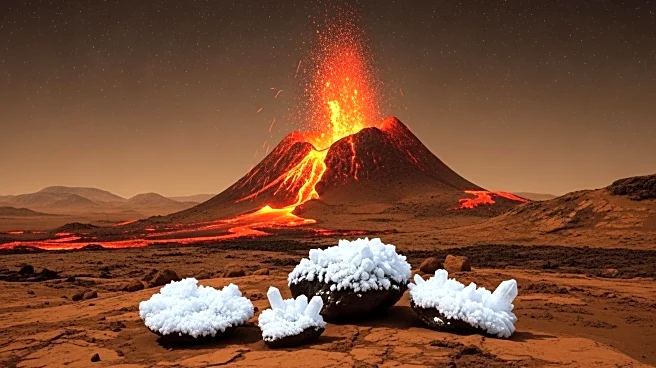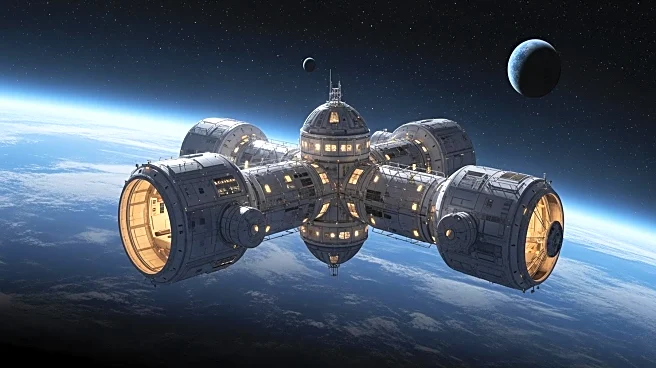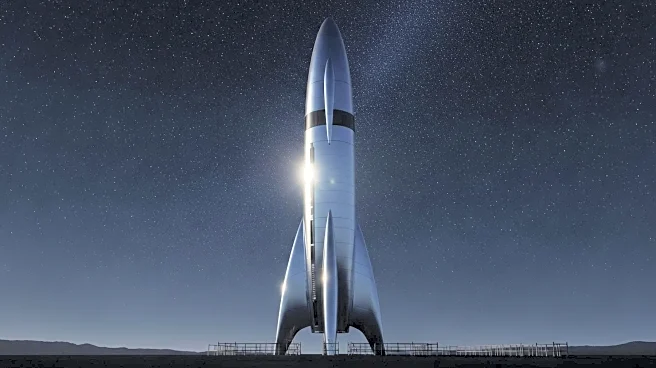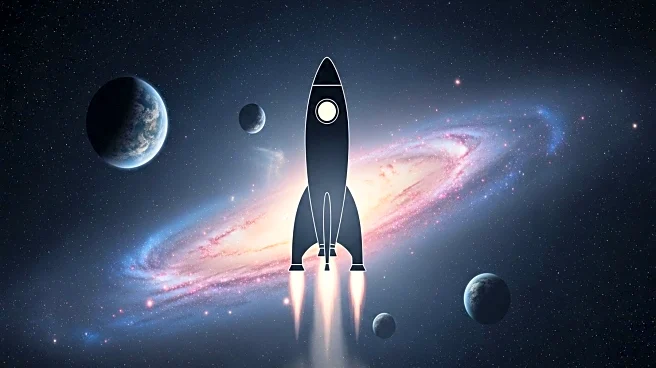What's Happening?
Dr. Lonneke Roelofs from Utrecht University has discovered that mysterious gullies on Mars are formed by blocks of frozen carbon dioxide (CO2 ice) through a process called sublimation. During the Martian
winter, ice accumulates on dunes, and as spring approaches, the sun warms the slopes, causing large ice blocks to break loose. The thin Martian atmosphere and temperature differences lead to rapid sublimation, where the underside of these blocks turns to gas, creating pressure that blasts away surrounding sand, forming gullies.
Why It's Important?
This discovery provides insight into the geological processes on Mars, offering clues about the planet's surface dynamics and potential for past life. Understanding how these gullies form helps scientists interpret Martian landscapes and assess the planet's habitability. The research also contributes to broader planetary science by demonstrating unique processes not found on Earth, enhancing our understanding of extraterrestrial environments.
What's Next?
Further research will likely focus on exploring other Martian surface features and their formation processes. Scientists may use this knowledge to refine models of Mars' climate and geological history. The findings could also inform future missions to Mars, aiding in the selection of landing sites and exploration targets.
